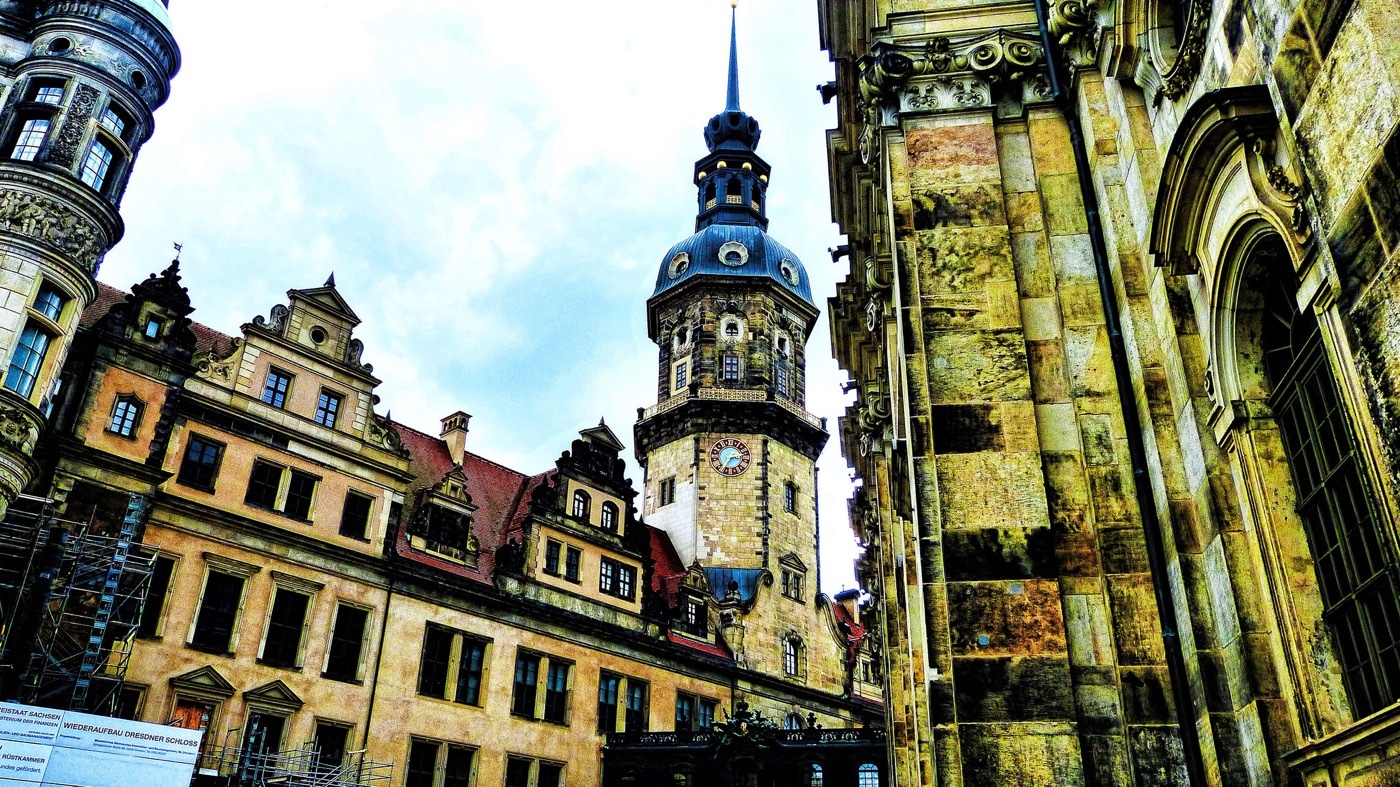Once upon a time, Dresden, Germany was a cultural mecca … then along came World War II. Dresden seemed to have a bull’s eye on its back and suffered greatly toward the end of the war with horrific bombings. Next the Iron Curtain fell and the once highly touted cultural mecca disappeared from the scene. Since Germany’s reunification – 25 years ago next October – more and more people are discovering the things that attracted people to Dresden before the war and are still there plus much more.
Located along the ElbeRiver, where the world’s oldest fleet of paddle steamers cruise up and down, Dresden offers spectacular architecture, world renowned art, inspiring musical performances and fascinating historical landmarks.
Upon arrival, first on my agenda was a walk through the city center to check things out. From the looks of it, I assumed all of the historic buildings had been spared destruction from the bombings … I was wrong. In the center of town stands Frauenkirche, the Church of Our Lady. During World War II, the church was bombed, collapsing into a 42 feet high pile of rubble that laid in place for 40 years – a reminder of the destructive powers of war.
Rather than construct a new building, Dresden residents raised funds through private donations to reconstruct the Church of our Lady and its surrounding buildings according to the original plans. Original stones charred from the bombings were salvaged and combined with new stones – a mosaic of past and present. The result is a resurrection of the Dresden of old.
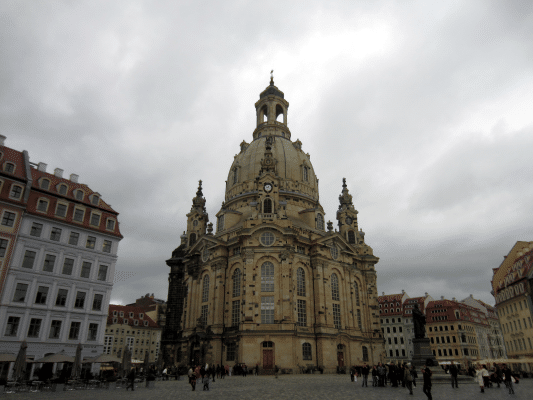
Much of the grandeur of Dresden can be attributed to Augustus the Strong who reigned as Elector of Saxony from 1694 to 1733. Best remembered as a patron of the arts and architecture, Augustus the Strong established the capitol city of Saxony as a major cultural center attracting artists from across Europe to his court. He amassed an impressive art collection and built lavish baroque palaces.
One of the world’s most famous buildings, the Dresden Zwinger, was built where Dresden’s defensive walls once stood. The sprawling palace is home to some of the world famous museums of the Dresden State Art Collections and the playful Nymphenbad fountains.
Augustus the Strong’s influence extends throughout the state of Saxony. This was a man who was clearly committed to opulence, mistresses, gluttony and most likely a whole slew of other sins. The stories are legendary – and truly fascinating – and the castles and collections he left behind are stunning.
My personal favorite is the fairytale MoritzburgCastle which I toured with a knight – although he was not in shining armor. Schloss Moritzburg is a gem of Baroque architecture not far from the center of Dresden. Between 1723 and 1733, Augustus the Strong had his best architects and artists convert an earlier Renaissance building constructed under Elector Moritz into a prestigious hunting and pleasure palace. The museum’s rooms are filled with magnificent examples of furniture, paintings, and porcelain. Together they present an impressive display of the history of Saxony.
Among the many special attractions in the Palace is the world’s most extensive collection of original interior fittings with exquisitely painted decorative wall covering and wall paintings on leather. The historic collection of hunting trophies – including the world’s heaviest red deer antlers – is one of Europe’s most important collections of its kind. Baroque furniture and paintings of the Dresden court, 18th century Meissen and East Asian porcelain complete the objects on display in the historic rooms.
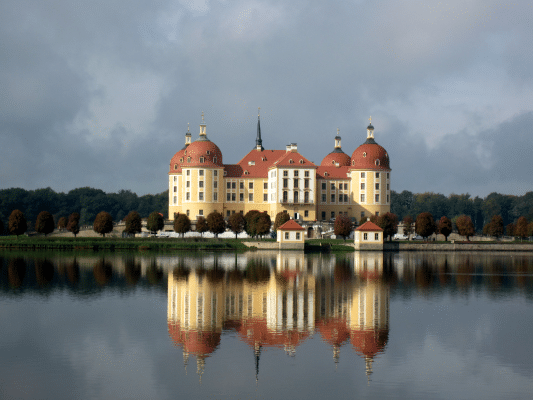
Moving on to another cultural treasure, music has always been at the center of Dresden. The Saxon State Opera House has been fully reconstructed and is once again thrilling visitors with sold out performances in a magnificent setting. Even outside the Opera House, Dresden’s music scene is alive and well. Every year international orchestras, soloists and acclaimed ensembles flock to the capital of Saxony for the Dresden Music Festival along with an excess of 100,000 visitors.
One of the nicest legacies and unexpected events of the cultural calendar is the International Dixieland Festival, which takes place the second week in May. The festival began in 1971 and is now Germany’s oldest old-time jazz festival. For eight days and seven nights, the capital of Saxony becomes Swingin’ Dresden and draws around half a million jazz fans to the city.
The week kicks off with the Dixieland family festival at Dresden zoo and continues at 28 venues around the city. One of the annual highlights is the riverboat shuffle on the Elbe, when the world’s oldest and largest fleet of paddle-steamers becomes a floating stage and festival-goers are invited to step aboard. The climax is the Dixieland parade through the city center, which culminates in a farewell jazz session.
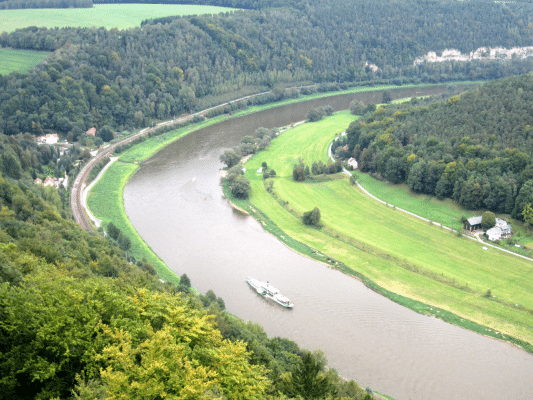
I took a break from castles and culture to check out a bit of German engineering at Dresden’s Volkswagen factory – described as the world’s most unusual car factory. Never before have I considered eating off of the floor of a car manufacturing facility (or any floor) but here I would. The Transparent Manufactory where workers in white coats assemble the premium product from Volkswagen, like the Phaeton, is staged as a public performance to entertain visitors.
Parts for the cars arrive by CarGoTram along the city’s transport lines. Purchasers of the luxury vehicles are invited to witness the birth and completion of their cars and the entire process is stunningly clean. It’s worth a tour, if only to experience a car factory without a hint of grease. Cultural events are regularly held in the foyer and the in-house restaurant with its chic bar is a popular meeting place.
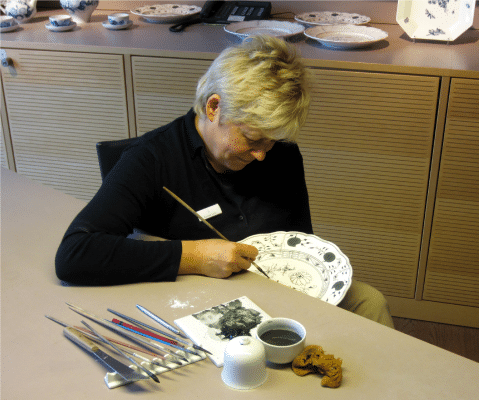
The State of Saxony is home to Europe’s first porcelain. For over 300 years, Meissen Porcelain has been producing exquisite porcelain marked by the famous crossed blue swords. I visited the factory in the charming town of Meißen to check out the demonstration workshops. After witnessing the craftsmanship of hand molding and painting that goes into each piece, I have a new appreciation for the price tags attached to the final product. The collection of molds may be the greatest treasure for the firm with every mold for every product made in the last 300 years being kept.
The world’s largest porcelain picture, the Procession of Princes, made from 25,000 seamless Meissen porcelain tiles adorns the outer wall of the long corridor in the stable yard of the royal DresdenCastle. The picture survived the fire-bombs of World War II because the temperatures used to create the porcelain were hotter than the bombs.
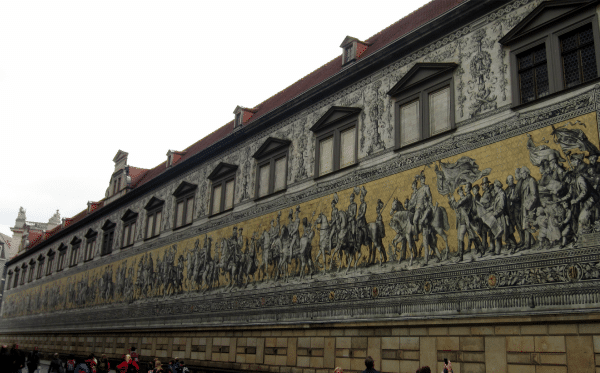
At the Restaurant Meissen which is attached, I experienced a “Time Travel” lunch. A three course menu was served on three famous Meissen dishes that were designed in three centuries. The appetizer was served on the “Swan design” from the Baroque period. The main course was served on the “green wine wreath” from the 19th century. Dessert arrived on the service from “Waves” with the painting “Forest Flora” representing present times.
In addition to the cultural treasures here and in the area, there is also amazing natural beauty. In the 18th century, Dresden based painters Adrian Zingg and Anton Graff hiked through the ElbeSandstoneMountains in search of beautiful landscape scenes. What they found reminded them of their native Switzerland. They wrote of Saxon Switzerland and the name stuck. Today this area is known as the SaxonSwitzerlandNational Park and it’s one of the most distinctive landscapes in Europe.
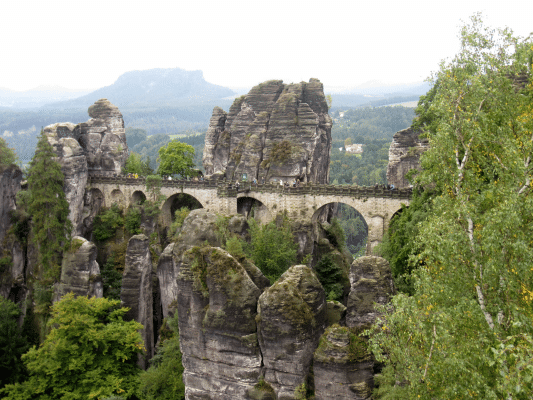
Filled with sandstone rock formations that were once at the bottom of the sea, the area is popular with rock climbers as well as tourists. The main attraction is a rock formation called the Bastei or “Bastion”. An inn was built here as early as 1826 and a stone bridge in 1851. In Medieval times knights lived among the sandstone rocks which provided the perfect lookout to keep an eye on their enemies.
Nearby stands Europe’s highest fortress – Königstein. The fortress takes up an entire plateau above the ElbeValley and a walk along the fortress walls offers a panoramic-view of the surroundings. On a clear day you can see the city of Dresden and the CzechRepublic. The fortress is an impressive military complex with a 750 year history. During World War II, the treasures amassed by Augustus the Strong were relocated from Dresden for storage in the powder magazine at the fortress – an act that saved countless cultural treasures which are on display in the museums today.
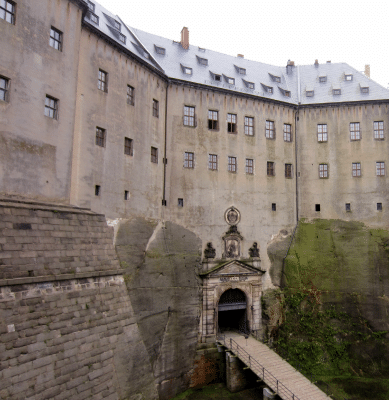
Augustus the Strong had some serious parties in this location. Guests were invited to a 24 hour feast of continuous eating and drinking. The success of the party was measured by the weight gain of the guests. Everyone was weighed as they arrived and again as they left. The average weight gain from the 24 hour feast was around 15 pounds per person. The main attraction was not the scales, but a wine barrel large enough to hold 240,000 liters of wine – now that’s a party!
The area code for Germany is 49.
[alert type=white]
Getting There:
AirBerlin is the only European carrier offering non-stop service from New York (JFK), Miami and Los Angeles to Berlin, the capital. In addition, there are non-stop flights from Fort Myers, Los Angeles, San Francisco, Las Vegas and Vancouver, Canada to Dusseldorf. Connecting air service is available from Dusseldorf to Dresden. I booked a direct flight to Berlin, shuttled to Berlin’s main train station, Hauptbahnhof, and connected by train to Dresden. It was simple and scenic! www.airberlin.com
Getting Around:
Germany’s trains are the way to go! Smooth rides, beautiful scenery and numerous departure times equal easy travel. DB Bahn offers new and improved regional trains with comfortable seats, spacious multi-purpose compartments and entry at platform level. Looking for express travel? Schedule a ride on DB Bahn’s ICE (Intercity-Express) between Berlin and Dresden. www.bahn.com
Where to Stay:
Just blocks from the train station, in the heart of Dresden, Ibis Königstein offers comfortable accommodations within walking distance of all the major attractions of Saxony’s capital city. It is also just a few blocks from the main train station. The best part? There is a vending machine in the hotel lobby that dispenses beer and wine. I considered moving in permanently.
Ibis Königstein
Prager Straße 9
01069 Dresden
Tel: +49 351 48562000
Where to Eat:
Experience time travel with a three course lunch at Restaurant Meissen – as each delicious course is elegantly presented on Meissen Porcelain with designs spanning three centuries. As a souvenir you will receive a menu card designed by a Meissen porcelain painter.
Restaurant Meissen
Porrzellan-Manufaktur Meissen
Talstraße 9, 001662 Meißen
Tel: 0 35 21/ 468-730
Enjoy traditional German dishes and beer while taking in the phenomenal views overlooking the ElbeValley at Panorama Restaurant Bastei
Panoramarestaurant Bastei
Bastei 01847 Lohmen
Tel: 0 35 02 / 47 790
What to See and Do:
Get familiar with Dresden with a hop-on/hop-off sightseeing tour with 22 stops.
Postfach 16 02 41
011288 Dresden
Tel. +49 351 – 899 56 50
Visit the DresdenState Art Collections
RoyalPalace
Taschenberg 2
01067 Dresden
Tel. 03 51 – 49 14 85 91
Zwinger
Theaterplatz 1
01067 Dresden
Tel. 03 51 – 49 14 66 79
Visit the transparent Volkswagen manufactory – the world’s most unusual car factory. English tours are available daily at 12:00, 3:00 & 5:00pm
Lennestraße 1
01069 Dresden
Tel. +49 351 420 44 11
See how all the porcelain magic happens at the House of Meissen and marvel at the steady hands of the painters.
Porrzellan-Manufaktur Meissen
Talstraße 9, 001662 Meißen
Tel: 0 35 21/ 468-700
Tour the fairytale MoritzburgCastle – a hunting and pleasure palace.
MortizburgCastle is easy to reach by public transportation from Dresden. Take the train from Dresden to Neustadt, then bus line 326 towards Radeburg from the railway station.
Explore 750 years of history accompanied by stunning views and one heck of a wine barrel at Europe’s highest fortress at Königstein
Festung Königstein
01824 Königstein
+49 035021 64 605
[/alert]

